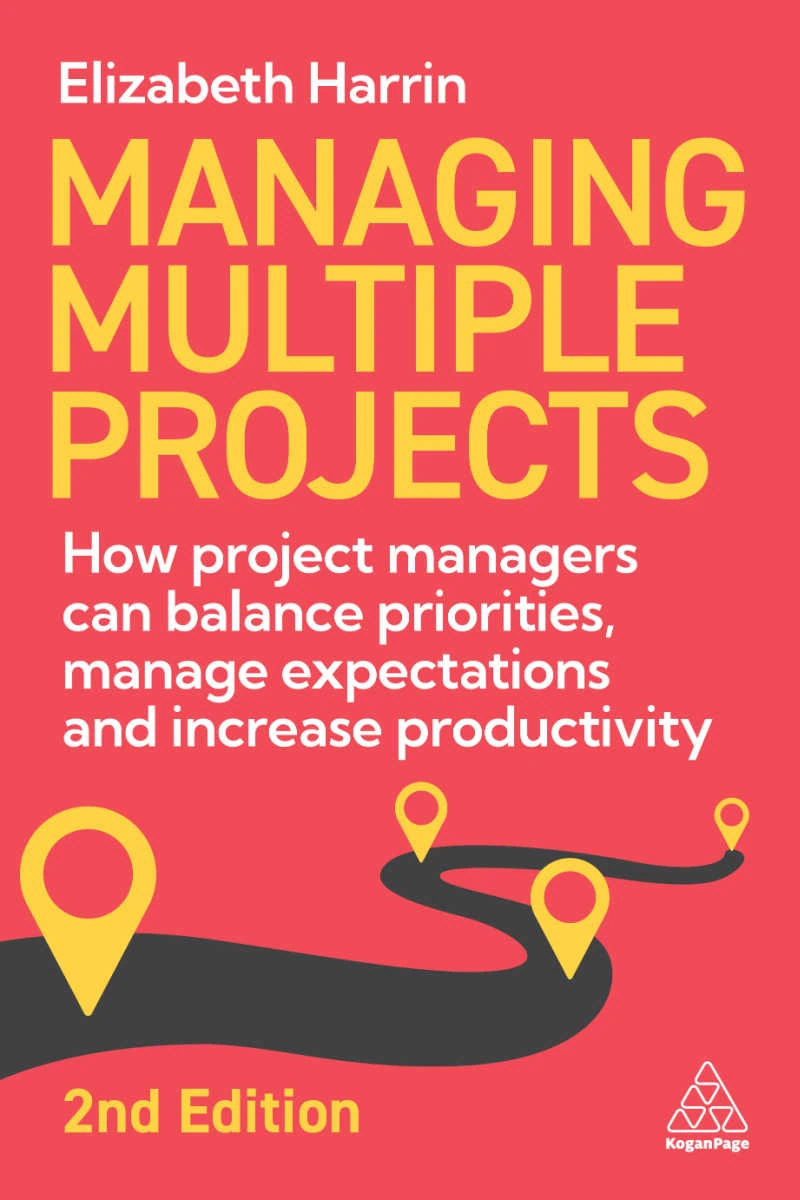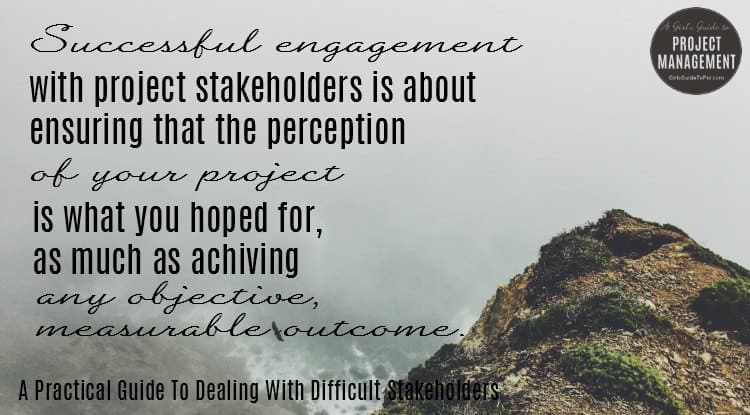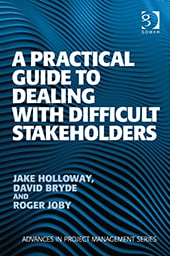A Practical Guide To Dealing With Difficult Stakeholders
This blog is reader-supported. When you purchase something through an affiliate link on this site, I may earn some coffee money. Thanks! Learn more.
I’m glad to see a more realistic take on stakeholder management being put forward by A Practical Guide to Dealing with Difficult Stakeholders. Often when books address stakeholders there is an unwritten assumption that generally stakeholders are feeling warm about your project, and even if they aren’t you can easily sway them with a good communications plan.
That’s not real life, is it?
What is a stakeholder?
The authors (for there are three: Holloway, Bryde and Joby) define a stakeholder as:
Any person or group who can impact the cost, schedule, specification, resourcing, outcome or perceived success of a project.
That’s a pretty board definition but I struggle to see how it could be any narrower. Stakeholders get in everywhere on projects.
They also use the measure of ‘perceived success’ instead of ‘actual’ or ‘specified’ success as part of their definition and I think that’s important.
The perception of success is probably more important than whether or not a project achieved the goals that were set at the beginning, because the business environment at project closure isn’t the same as at project start. What the success criteria of a project look like changes as you go through the project.
They spell this out very clearly in this quote: “Successful engagement with project stakeholders is about ensuring that the perception of your project is what you hoped for, as much as achieving any objective, measurable outcome.”
Prioritizing stakeholders
I also really like their ideas around prioritizing stakeholders. So often the advice given to project managers is to put all the stakeholders on one of those two-by-two grids and plot them out. Then tailor your engagement activities appropriately.
In real life the most important stakeholders take up far more time than the dozen or so that might have been flagged as ‘high involvement required’ by your stakeholder analysis, such as with the stakeholder saliency model. Prioritize them. You want to get to a point where you’re spending time on the stakeholders that really matter.
Real life stakeholder management
What I particularly took away from this book is that despite it looking very formal and being part of the Advances in Project Management series from Routledge (previously Gower), it’s an easy and practical read. There are plenty of stories from the authors. I felt quite sorry for them for having to spend so much time in their careers working with really difficult stakeholders.
There are also some moments of pure comedy that an experienced project manager will smile and nod along to. This made me chuckle:
Most stakeholders don’t particularly care about the project as they have a myriad of other priorities and none will assign it as much time as you think they should.
And also this about project sponsors:
They want to change their mind, particularly about requirements and scope – without those changes being remarked on or impacting the project, or even being written down. Many sponsors suffer from “Great Man Syndrome”. That is, they imagine that every conversation they have with you (even informal ones) becomes somehow incorporated into the project scope. When they find out that it isn’t, they often say, “I thought we talked about this?”
Because that’s NEVER happened to me (*wink*).
I did feel as if I had read some of the advice about working with project sponsors before but it wasn’t that long ago that I read a whole book about sponsorship (Strategies for Project Sponsorship).
Engaging unusual stakeholders
There’s a chapter on the team as project stakeholders and it briefly mentions the role of the project manager as a stakeholder in the project (which is a position I stand by).
The authors point out that demotivation is a project killer and the team are definitely stakeholders when it comes to that. They write:
“Projects can be difficult, messy political, under-resourced, pointless and/or unpopular. It is a rare project manager indeed who can bring the same levels of enthusiasm to each and every project regardless of how challenging, interesting and straightforward they are.”
There’s also a section on gatekeepers as stakeholders and this is an angle I haven’t seen before. It’s great advice for project teams: don’t forget that people like the finance process owners can create problems for you on your projects.
Engagement with them and don’t ignore people in gatekeeper roles as a stakeholder group in their own right.
I enjoyed reading it (which is happening less and less with project management books, if I’m honest) and I think it’s a really practical guide to dealing with people on projects, whether you can openly acknowledge them as being in the ‘difficult’ box or not.
Don’t be put off by the ‘Advances in PM’ series title. You can make use of the tips in here at whatever stage you are in your career.
Anyone can come across sponsors who don’t want to spend any time on the project or stakeholders who are deliberately trying to make life difficult. Make your life easier with this book.
Read next: 5 skills you need to manage complex projects



